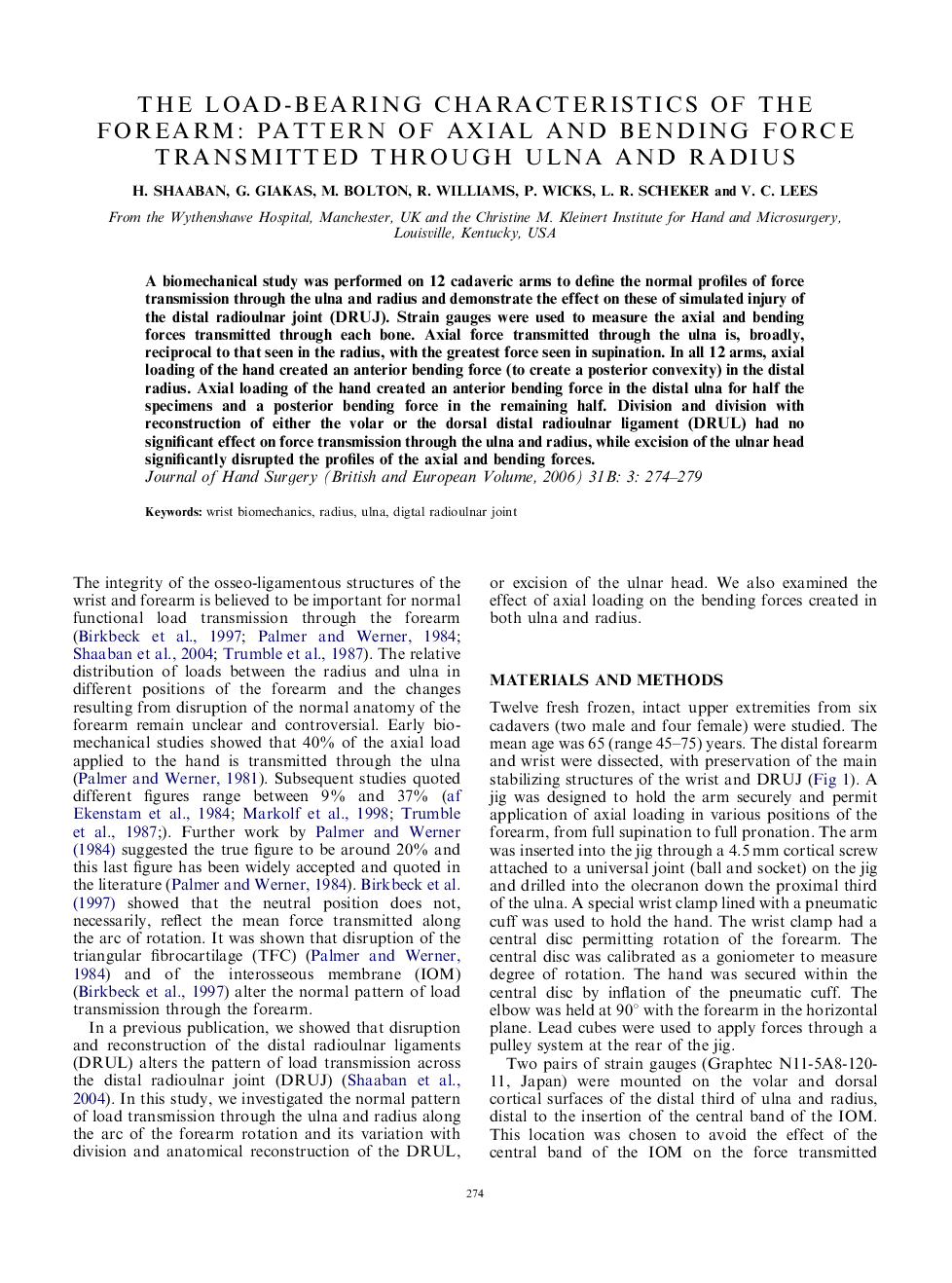| Article ID | Journal | Published Year | Pages | File Type |
|---|---|---|---|---|
| 4071730 | The Journal of Hand Surgery: British & European Volume | 2006 | 6 Pages |
A biomechanical study was performed on 12 cadaveric arms to define the normal profiles of force transmission through the ulna and radius and demonstrate the effect on these of simulated injury of the distal radioulnar joint (DRUJ). Strain gauges were used to measure the axial and bending forces transmitted through each bone. Axial force transmitted through the ulna is, broadly, reciprocal to that seen in the radius, with the greatest force seen in supination. In all 12 arms, axial loading of the hand created an anterior bending force (to create a posterior convexity) in the distal radius. Axial loading of the hand created an anterior bending force in the distal ulna for half the specimens and a posterior bending force in the remaining half. Division and division with reconstruction of either the volar or the dorsal distal radioulnar ligament (DRUL) had no significant effect on force transmission through the ulna and radius, while excision of the ulnar head significantly disrupted the profiles of the axial and bending forces.
